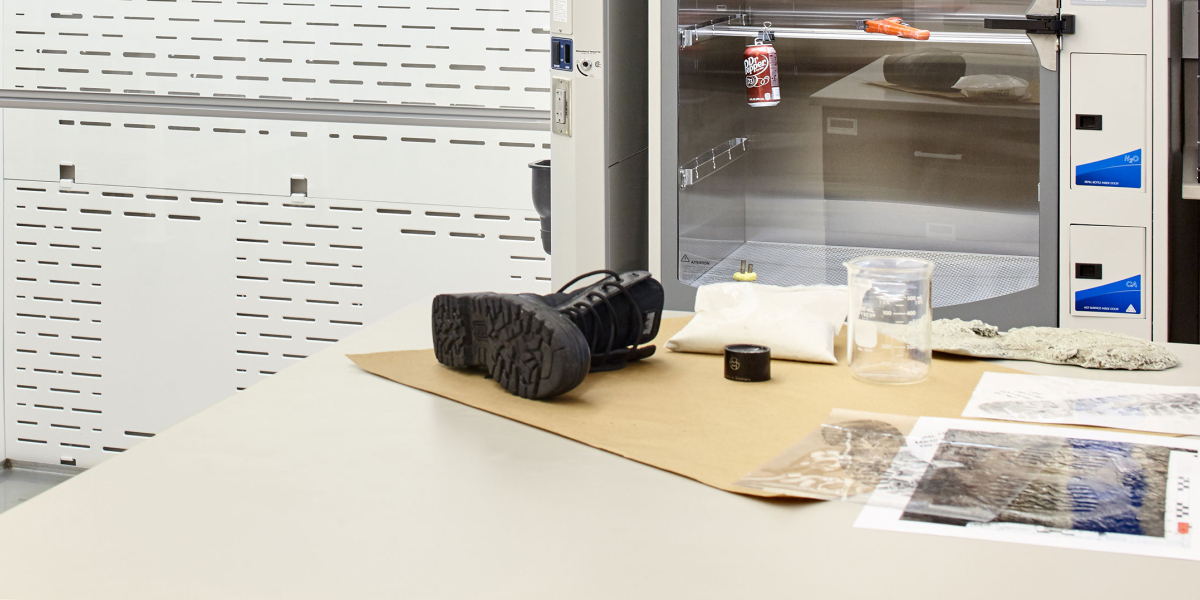Is your drying of DNA evidence up to par?

No one will argue that DNA has become an important source of forensic evidence from crime scenes. Many believe it is the most powerful tool for convicting the guilty and exonerating the innocent. The integrity of the DNA evidence is dependent on the proper handling and processing of biological material.
When processing biological evidence for DNA there are three top concerns:
- Health and safety of persons—handling biohazardous evidence
- Integrity of evidence—risk of cross-contamination
- Preservation of DNA material—effective drying of evidence
The sources of DNA found in wet evidence are typically collected from blood and body fluids such as semen and saliva. All blood and body fluids need to be handled as if they are biohazards. Masters provides a comprehensive list of all types of biohazards the forensic identification specialist may be exposed to while handling evidence seized from a crime scene (1). The greatest risks involve Hepatitis B, HIV, tuberculosis, and other bacterial or fungal infections. These types of biohazard threats are classified at Biosafety Level II (2).
Health and Safety
Although the greatest risk of infection to personnel processing evidence is through skin or mucus membrane contact, to prevent aerosol exposure, all evidence should be handled and stored under conditions where dried blood, bacteria or fungi do not become airborne (3).
Evidence Drying Cabinets have been developed to address the health and safety issues of drying evidence that may contain biohazards. These cabinets are designed to dry wet evidence with air that has been prefiltered and remove biohazards and odors from the exhausted air through a series of filters. By isolating and containing biohazards to a specific area that can easily be decontaminated and preventing the biohazards from becoming airborne, the use of Evidence Drying Cabinets greatly increase the safety of evidence processing personnel and other workers in the building.
Long Term Preservation
Another area of concern regarding the processing of DNA evidence that is addressed by Evidence Drying Cabinets is maintaining the integrity of the evidence. The cabinet provides a convenient storage area that can be secured maintaining proper chain of custody. When using a decontaminated Evidence Drying Cabinet to dry evidence, the risk of cross contamination is greatly reduced because the evidence is isolated in a clean DNA free environment. Intake filters prevent the movement of DNA or trace evidence from outside the cabinet to inside the cabinet. It is important to dry and process the evidence separately from each individual in the case.
Finally, Evidence Drying Cabinets ensure that DNA samples can be obtained from the dried evidence for many years. DNA is degraded by UV light and bacteria. To stop the growth of bacteria and thus harm to the DNA, all moisture must be removed from the evidence before it is stored. Evidence Drying Cabinets move filtered air over the drying evidence to reduce drying time and ensure all areas of the evidence are dried properly. Typically dried biological material potentially containing DNA can be sealed and stored indefinitely (4).
In 2010, Labconco added Evidence Drying Cabinets to its wide variety of laboratory ventilation and forensic products manufactured. Protector® Evidence Drying Cabinets come in a variety of models and sizes and they all feature stainless steel liners providing the optimal surface for decontamination. An industry exclusive UV light is available providing secondary decontamination to increase safety by reducing biohazards and reducing the potential of DNA cross contamination.
—————————————————————-
Bibliography
Cockle, D M.A., ‘Evidence Drying Cabinets’, Royal Canadian Mounted Police, 2008, available: http://www.rcmp-grc.gc.ca/fsis-ssji/firs-srij/bulletins/dc-as-cab-arm-eng.htm (accessed 15 March 2012).
Reference List
1) Masters, Nancy E; Safety for the Forensic Identification Specialist. Lightning Powder Company Inc. , Salem, Oregon 1995 (Plog, 1998 In, Masters 1995:28)
2) National Safety Council; Accident Prevention Manual for Business and Industry Administration & Programs. 12th Edition. Green Cross for Safety, Itasca, Illinois, 2001 pg 584
3) Plog, Barbara A. (editor) Fundamentals of Industrial Hygiene, 3rd Edition, National Safety Council:7 1998 (updated in 2002)
4) Sensabaugh, G.F; Dried Samples: Body Fluids 9 DNA Typing of Biological Evidence Material In Ancient DNA edited by B. Herrmann & S. Hummel, Springer-Verlag, New York 1994 .
| chevron_left | Distillation: It’s a Gas …Separation. | Articles | Lyophilization considerations for research and development | chevron_right |






